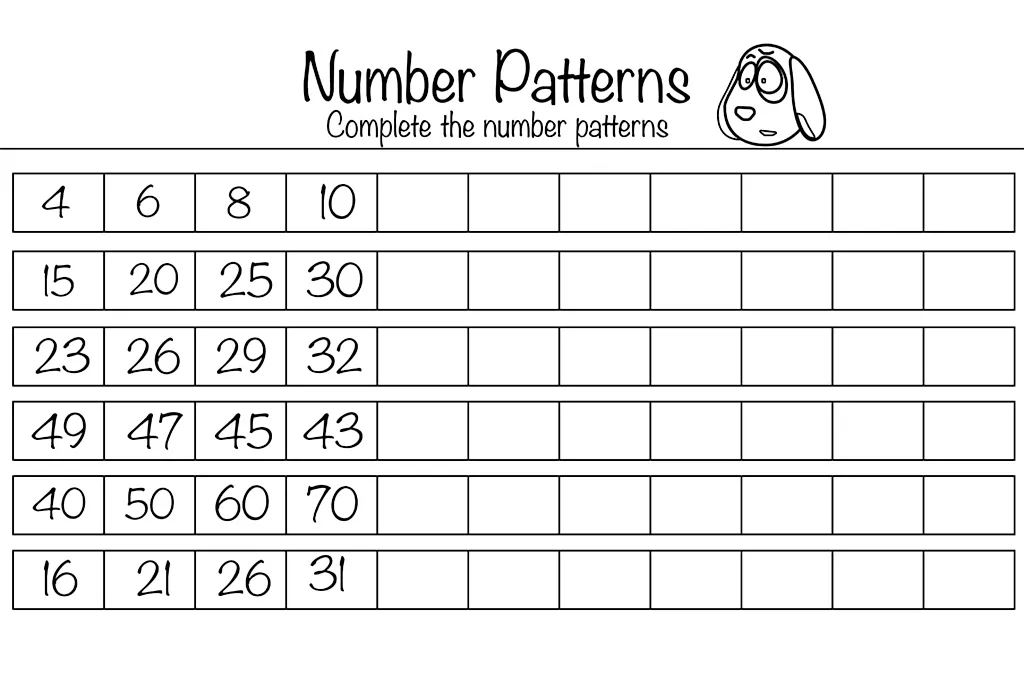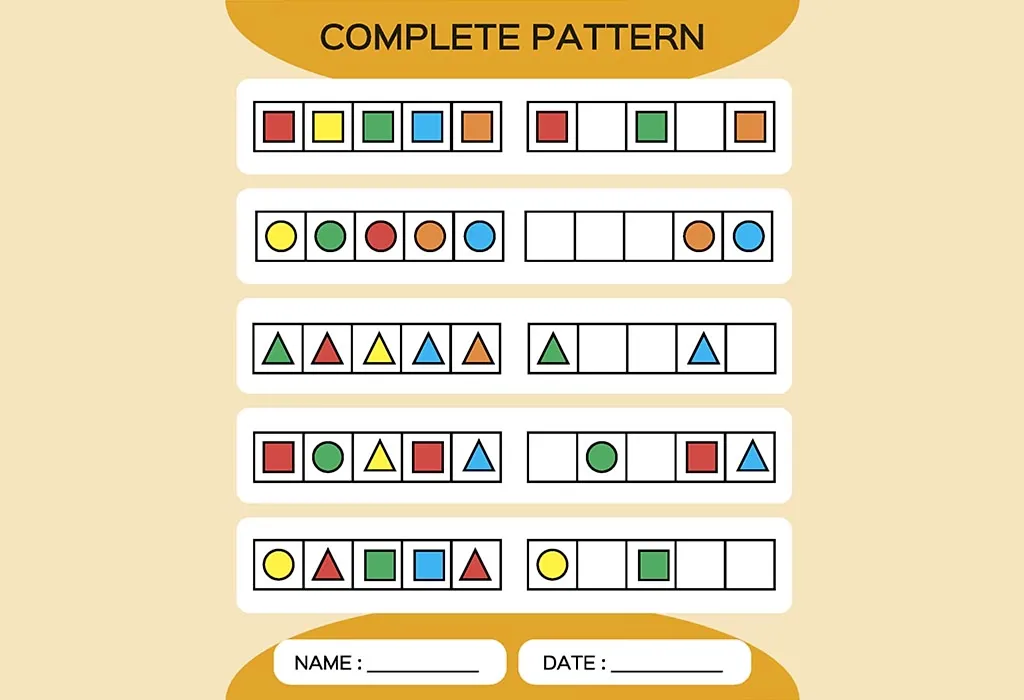Patterns in Maths: Definition, Types, Rules, and Examples
Mathematics isn’t just about numbers, equations, or formulas; it’s a treasure trove of patterns that help us make sense of the world around us. A mathematical pattern is a predictable arrangement or sequence that follows a specific rule or structure. These patterns are everywhere in our daily lives – from the design of a building, the sequence of numbers in your bank account, to the shapes in nature. Understanding patterns in maths isn’t just for mathematicians; it’s for anyone who loves to spot regularities and predict outcomes.
In this article, we’ll explore what mathematical patterns are, their types, the rules they follow, and real-life examples that will make these concepts much easier to understand.
What Is a Pattern in Maths?
In mathematics, a pattern refers to a sequence or arrangement that follows a specific rule or structure. These patterns can be made up of numbers, shapes, or even objects, and they repeat in a predictable way. They allow us to see relationships and structures that simplify complex problems.
Why Is Learning Patterns in maths Important for Children?
Learning patterns in maths is crucial for children because it helps them develop essential skills in problem-solving and logical thinking.
Here are a few reasons why learning patterns is important:
- Improves problem-solving skills: Recognising patterns in maths helps children break down problems into manageable steps and find solutions more easily.
- Boosts logical thinking: Understanding how patterns work encourages logical reasoning, which is useful in all areas of learning.
- Enhances memory: Recognising repeated sequences strengthens memory and helps children recall information more effectively.
- Builds foundation for advanced topics: Learning simple number and shape patterns prepares children for more complex topics like algebra and geometry.
Rules of Patterns in Mathematics
In mathematics, every pattern follows a specific rule or set of rules. Here are a few basic rules that govern mathematical patterns:
1. Addition/Subtraction Rule
The most common rule in patterns is based on adding or subtracting the same number. For example, in the sequence 3, 6, 9, 12, the rule is to add 3 to each number. Similarly, you can have patterns that subtract the same number, like 20, 15, 10, 5.
2. Multiplication/Division Rule
Some patterns follow a rule where each number is multiplied or divided by the same factor. For instance, in the sequence 2, 4, 8, 16, the rule is multiplying by 2 each time. Similarly, patterns can follow division, such as 64, 32, 16, 8, where each number is divided by 2.
3. Repeating Patterns
In some cases, patterns repeat after a certain number of steps. For example, in numbers with patterns like 2, 4, 2, 4, the sequence repeats every two numbers.
Types of Patterns in Mathematics
Different mathematical patterns can involve numbers, shapes, or even actions that repeat in a certain way. Let’s explore some of the most common types of patterns found in maths.
1. Number Patterns
Number patterns involve sequences of numbers that follow a specific rule. For example, in a simple arithmetic pattern like 1, 2, 3, 4, 5, the rule is to add 1 each time.
2. Shape Patterns
Shape patterns involve repeated arrangements of shapes. For instance, a pattern like a triangle, square, triangle, square repeats in a regular way. These patterns in shapes are especially useful for younger students like those studying maths patterns for classes 1, 2, and 3, as they help them recognise visual patterns and understand basic geometry.
3. Repeating Patterns
Repeating patterns occur when the same set of numbers or objects appears in a regular order. For example, the sequence 5, 10, 5, 10 repeats the numbers 5 and 10 in the same order.
4. Symmetry Patterns
Symmetry patterns involve shapes or figures that are identical on either side of a central line. For example, a butterfly’s wings show symmetry. Recognising symmetry is not only fun but also helps children understand balance and proportion, which are important in both maths and real life.
Examples of Patterns
Patterns are all around us. By looking at these examples, we can better understand how patterns help us make sense of the world.
Patterns Example in Maths
maths is full of fascinating patterns that help us predict and solve problems. Here are a few examples:
1. Number Sequences
One simple example of maths patterns and sequences is 2, 4, 6, 8, 10. This pattern follows the rule of adding 2 each time. We can predict that the next number will be 12.
2. Multiplication Patterns
In multiplication, patterns often emerge. For instance, multiplying by 5 creates a pattern: 5, 10, 15, 20, 25. The rule here is to multiply by 5 each time.
Patterns Example in Nature
Nature is full of patterns that repeat in beautiful ways. Here are some examples you might recognise:
1. Flower Petals
Many flowers have petals arranged in repeating patterns. For example, lilies have three petals, daisies have 5, and some flowers even have 8. These patterns in nature help plants grow in a balanced and efficient way.
2. Animal Stripes
The stripes on a zebra or the spots on a leopard are another example of repeating patterns in nature. These patterns not only look beautiful but also help animals blend in with their surroundings.
Patterns Example in Everyday Life
We also see patterns in our daily routines and surroundings. Here are a couple of examples:
1. Traffic Lights
The colours of traffic lights follow a predictable pattern: red, yellow, green, and then it repeats. This pattern in everyday life keeps the flow of traffic organised and safe.
2. Seasons
The changing of seasons is a natural pattern that we see every year. Spring, summer, fall, and winter follow a repeating cycle that helps us prepare for the weather ahead.
How to Teach Your Kids About Patterns?
Teaching kids about patterns is not only fun but also helps them develop important skills in maths and problem-solving. Here are a few simple ways to teach kids about patterns.
1. Start with Simple Number Patterns
Begin by introducing your child to basic number and pattern sequences. For example, start with patterns like 2, 4, 6, 8, and ask your child to figure out what comes next.
2. Use Objects to Show Shape Patterns
Using everyday objects like blocks or toys, you can create patterns in shapes. For example, arrange red and blue blocks in a repeating pattern (red, blue, red, blue) and ask your child to continue it.
3. Make Patterns Part of Daily Activities
Incorporate patterns into daily life. For instance, when setting the table, you could arrange cups and plates in a repeating pattern, or when walking outside, you could point out patterns in the leaves or stones.
Solved Questions on Patterns
Solving problems based on patterns helps reinforce understanding and improve problem-solving skills. Let’s look into these examples and break them down step by step.
1. Example 1: Find the next number in the sequence 5, 10, 15, 20, __?
Solution:
This is an example of a simple arithmetic pattern where the difference between each number is 5.
- Start with 5
- Add 5 to get 10
- Add 5 again to get 15
- Add 5 again to get 20
So, by following this rule, we add 5 to 20. The next number in the sequence is 25.
2. Example 2: What comes next in the sequence 3, 6, 12, 24, __?
Solution:
This is a geometric pattern, where each number is multiplied by 2.
- 3 × 2 = 6
- 6 × 2 = 12
- 12 × 2 = 24
So, following the same rule, we multiply 24 by 2. The next number in the sequence is 48.
3. Example 3: Find the missing number in the sequence 1, 4, __, 16, 25?
Solution:
This pattern involves square numbers. Each number is the square of a whole number.
- 1 is 1²
- 4 is 2²
- The missing number is 3², which is 9.
- 16 is 4²
- 25 is 5²
So, the missing number is 9. This is an example of solving number patterns using square numbers.
FAQs
1. What is a pattern in maths?
A pattern in maths is a sequence or arrangement that follows a specific rule. It can be made of numbers, shapes, or objects that repeat in a predictable way.
2. Why are patterns important for children?
Patterns help children develop important skills like problem-solving, logical thinking, and memory. They make it easier for children to understand maths concepts and can even boost creativity. Learning patterns also prepares them for more complex topics in maths later on.
3. How can I teach my child about patterns?
You can teach your child about patterns by starting with simple number sequences or shapes. Use everyday objects like blocks or toys to create visual patterns and encourage your child to continue the pattern.
Patterns play a crucial role in understanding maths and developing problem-solving skills. By focusing on patterns, children not only improve their maths abilities but also gain confidence in their problem-solving skills.
Also Read:
maths Riddles for Kids
Maths Puzzles for Children
Engaging maths Activities for Kindergarten
Maths Tricks for Children to Boost Calculation Skills
Was This Article Helpful?
Parenting is a huge responsibility, for you as a caregiver, but also for us as a parenting content platform. We understand that and take our responsibility of creating credible content seriously. FirstCry Parenting articles are written and published only after extensive research using factually sound references to deliver quality content that is accurate, validated by experts, and completely reliable. To understand how we go about creating content that is credible, read our editorial policy here.
























